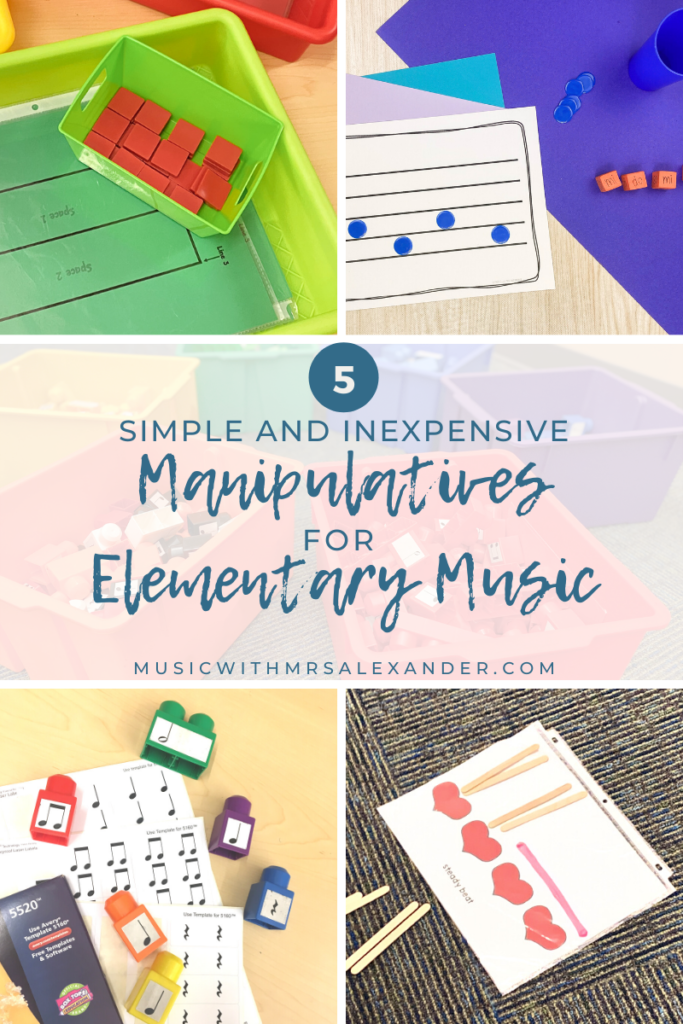
We all know how valuable hands-on learning experiences are for our students. But sometimes, the thought of planning and executing lessons like these feels daunting. You aren’t sure where to start or what to use. Where do I find materials? How much will it cost? Are they durable enough for hundreds of students to use? Creating music manipulatives for your elementary students doesn’t have to be a complicated (or expensive) undertaking. Sometimes the simplest things help make the most meaningful connections!
Why Should I Use Music Manipulatives?
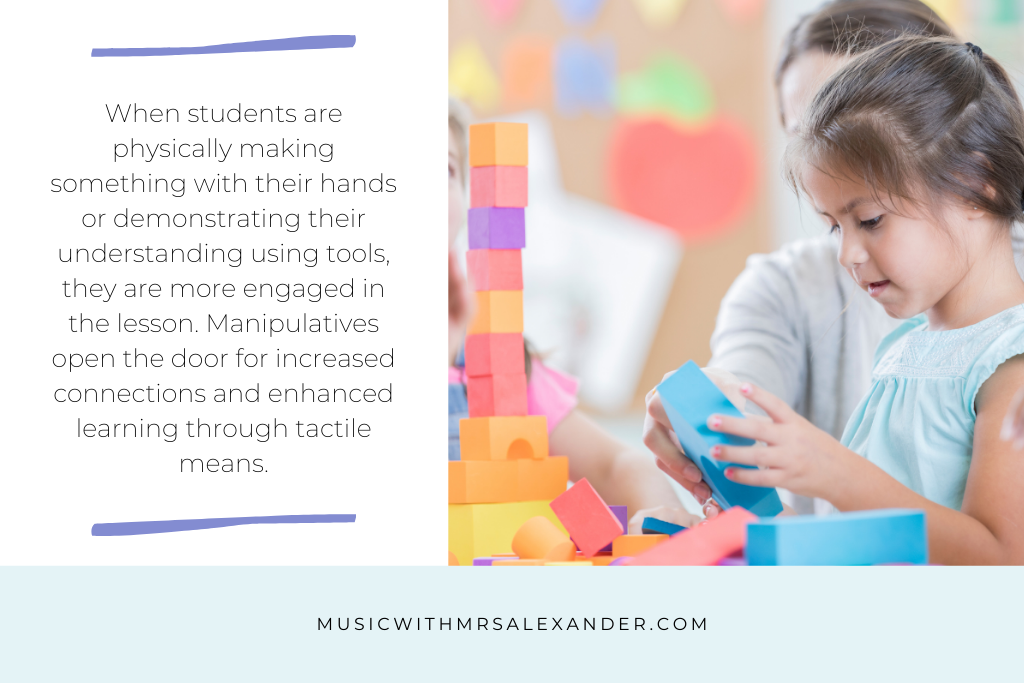
I couldn’t teach without manipulatives. They are an essential part of my curriculum. Over the years, I’ve found that making concepts hands-on helps my students learn so much better. Manipulatives also make learning more engaging. When students are physically making something with their hands or demonstrating their understanding using tools, they are more engaged in the lesson. Manipulatives open the door for increased connections and enhanced learning through tactile means. Here are a few of the most frequently used music manipulatives in my elementary classroom.
Building Blocks
Building blocks are one of the hands-on ways I teach rhythm to my students. My favorites are the Mega Bloks First Builders. I’ve been lucky enough to have some donated by a local daycare, and I’ve found them for pretty cheap on eBay. The blocks come in many different shapes, but I only use the ones with one or two “bumps” on top. They are perfect for visually representing one and two-beat sounds. I use the longer blocks as bases for building rhythms. For the labels, I print note values on Avery weatherproof labels. Then, I cut them to size using scissors or my craft knife and a straight edge if I’m in a hurry. They hold up really well to repeated use. They get a little worn and dirty after a couple of years, but I don’t mind re-labeling if I can get three or so years of wear out of them!
One of the ways I use rhythm blocks in my classroom is in my Say It, Build It, Write It center activity. Each group gets a set of blocks, rhythm cards, dry erase markers, erasers, and activity mats inside a dry erase sleeve. First, the students pull a rhythm card from the pile and place it in the top box. They say and clap their rhythm. Then, they build it using their rhythm blocks. Lastly, they write the rhythm in the boxes at the bottom. Once they have completed all three steps, they put back their old rhythm and pull a new one.
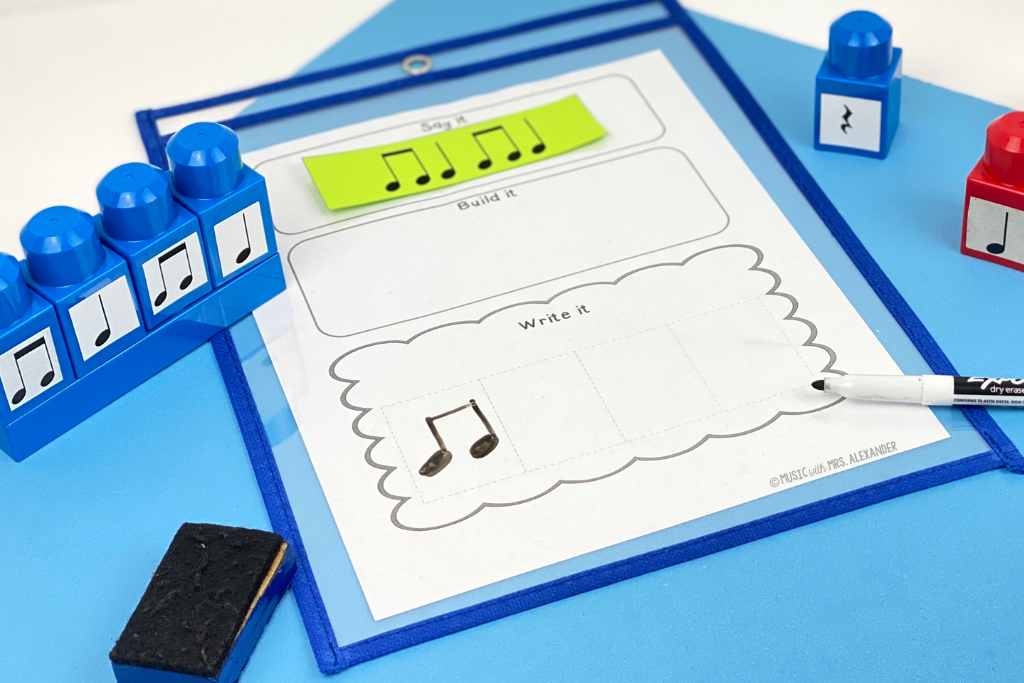
Craft Sticks
Craft sticks are another one of my favorite tools for teaching rhythm. I use the plain, normal-sized ones for rhythm decoding and rhythmic dictation. For decoding, each student gets a strip of poster board with four hearts on it. We say and clap the word(s) on each beat, then the students use their sticks to show the number of sounds. This leads to us learning about quarter and eighth notes because the sticks match the stems on the notes.
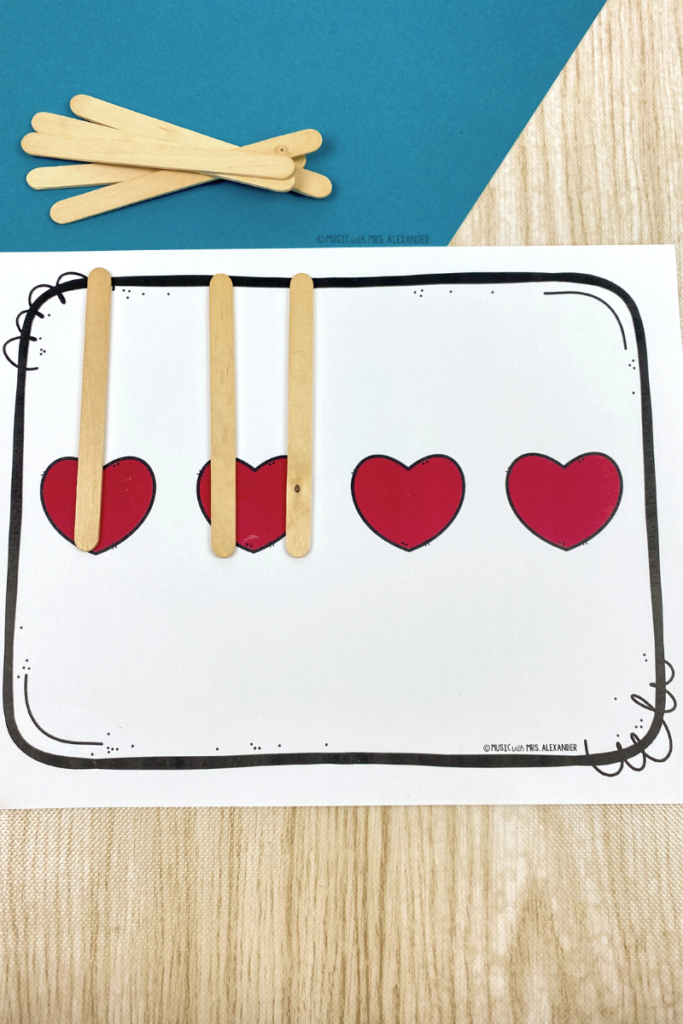
Another way I use craft sticks to teach rhythm is my students’ favorite game–Busted! I print rhythms on small return address labels and stick them to large multicolored craft sticks. The sticks go inside a plastic cup, along with a few with the word “BUSTED!” on them. My students play in groups and take turns pulling sticks from the cup. If they say and clap the rhythm correctly, they get to keep it. If they say the rhythm incorrectly, they put it back. When they pull a stick that says “BUSTED,” they have to put back all of the ones they’ve won. The person at the end of the game with the most sticks wins! As simple as it sounds, my kids BEG to play this game over and over!
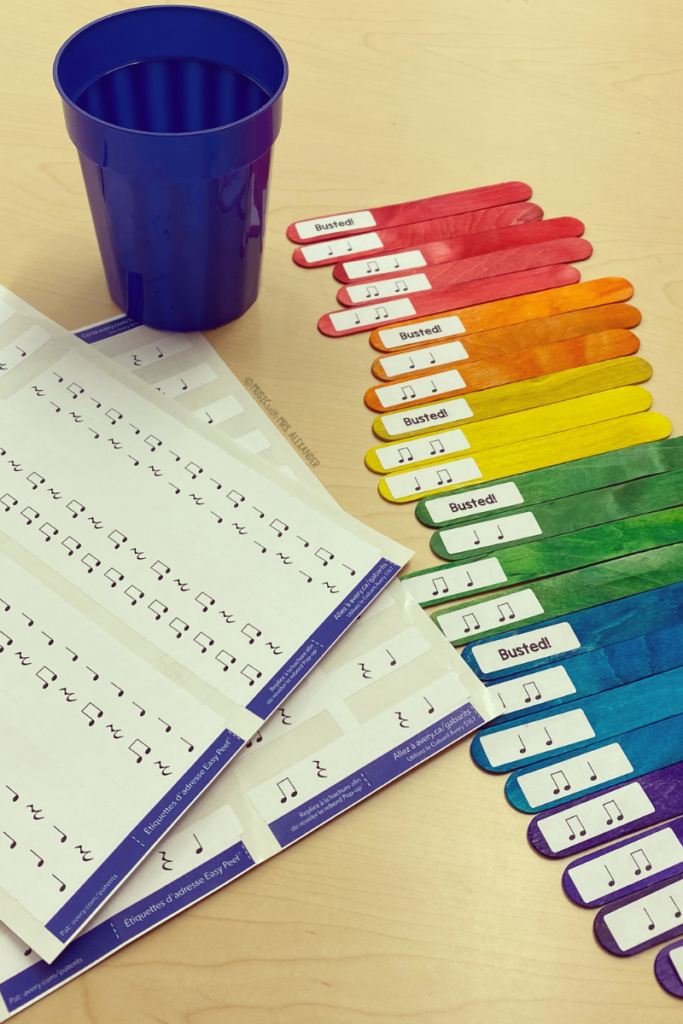
Foam Dice
Blank foam dice are perfect music manipulatives for rhythmic and melodic composition activities. Dollar Tree typically stocks 50 small-ish ones in a pack for $1 in their teacher supply section. I’ve also found larger ones on Amazon for around $12 for 100 dice. I use a fine point Sharpie to write rhythms or solfege on the dice. Small plastic cups are just the right size for dice shakers–cover the top with your hand, shake it up, then roll them out!
My Roll-A-Melody station uses these dice to create melodies. For this activity, each student (or pair of students) gets a music staff inside a dry erase sleeve, a cup with four dice, a dry erase marker, and an eraser. First, they shake up the dice and roll them out to create their melody. Then, they write the pitches under the staff and draw the noteheads on the lines and spaces. Once they are done writing, they go to an instrument to play their melody.
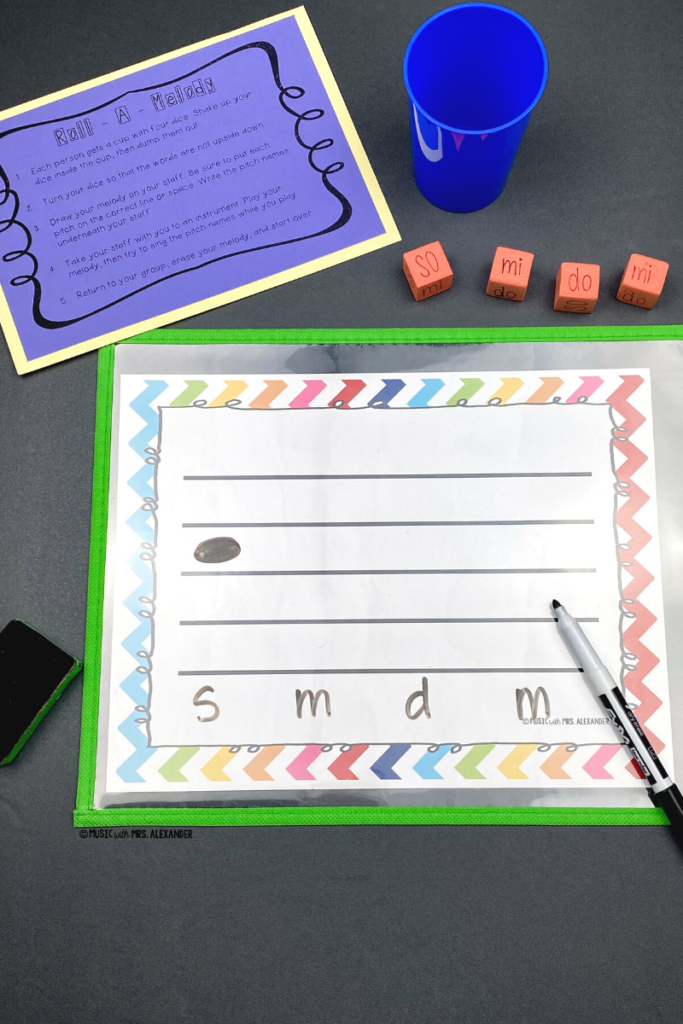
Bingo Chips
Bingo chips are the Swiss Army knife of my classroom! I use them for everything. They’re cheap, portable, and easy to use. Perhaps my favorite use for bingo chips is using them to notate melodies on the music staff. For some reason, my students have more success using them for notation than using paper and pencil.
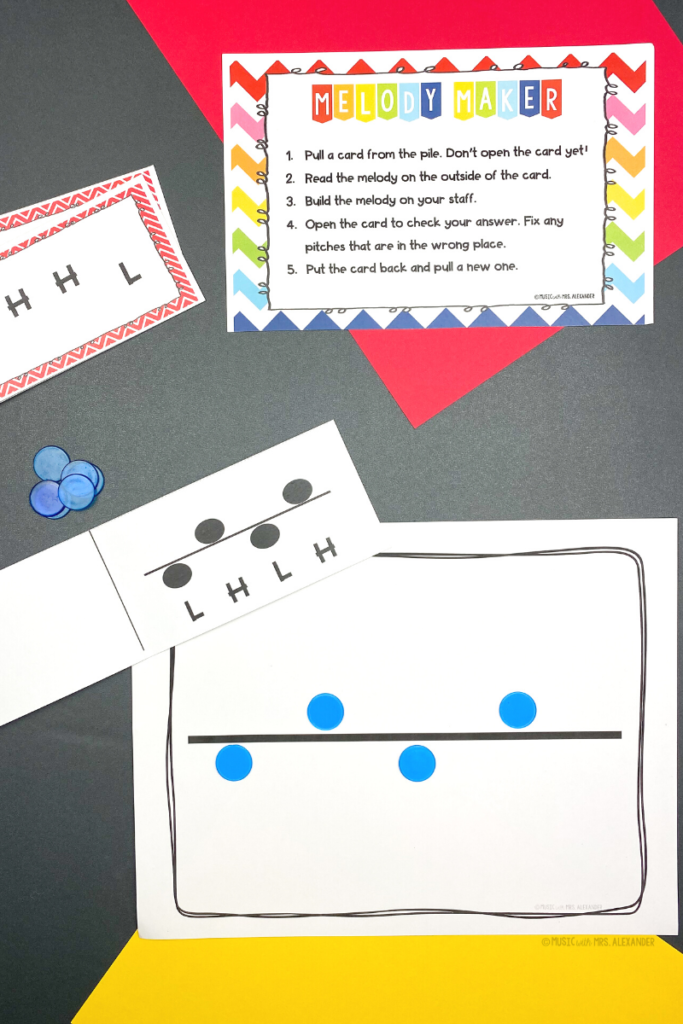
There are times that we use bingo chips for their intended purpose! Rhythm Bingo is a fun way for students to practice reading rhythms, and it allows me to informally assess them while we play. I start with a simple 3×3 bingo board with only a few two-beat rhythm patterns. Once they are comfortable, we move to four-beat rhythms on a 3×3 or 4×4 grid. Each round of the game becomes more challenging as I change the way I call the rhythms. First, I say the pattern, and they find it on the board. Once that becomes easy for them, I play the rhythm on an instrument. They have to figure out what rhythm I played, then find it on their board. Since my students are younger, we usually play Rhythm Bingo in pairs. Having a partner makes finding the rhythms on the grid easier, plus it allows them to work together and learn from each other.
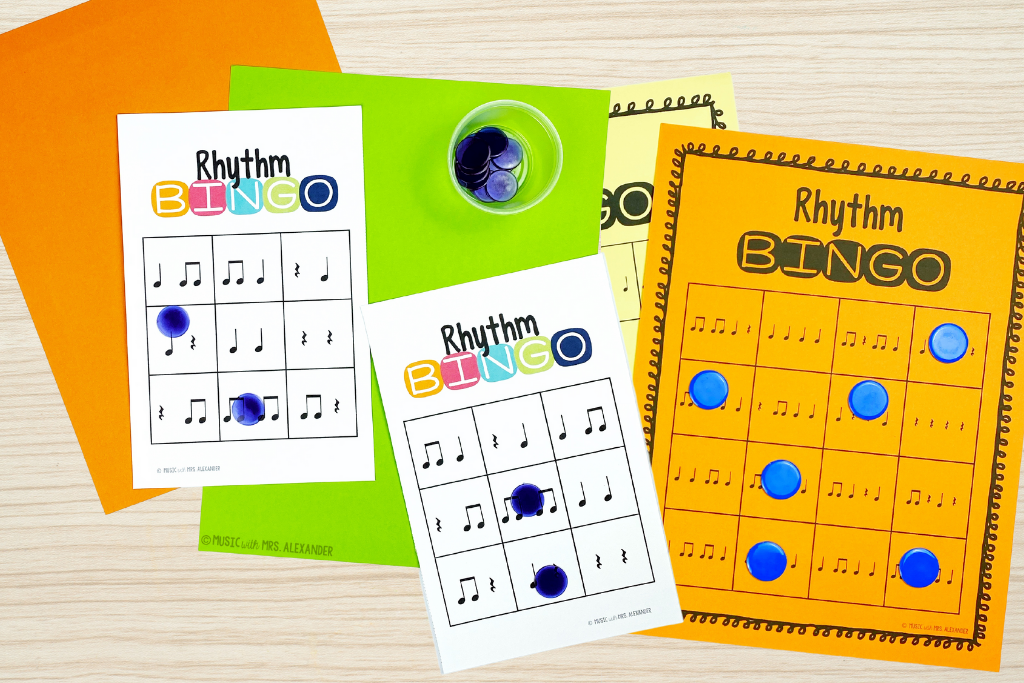
Slime
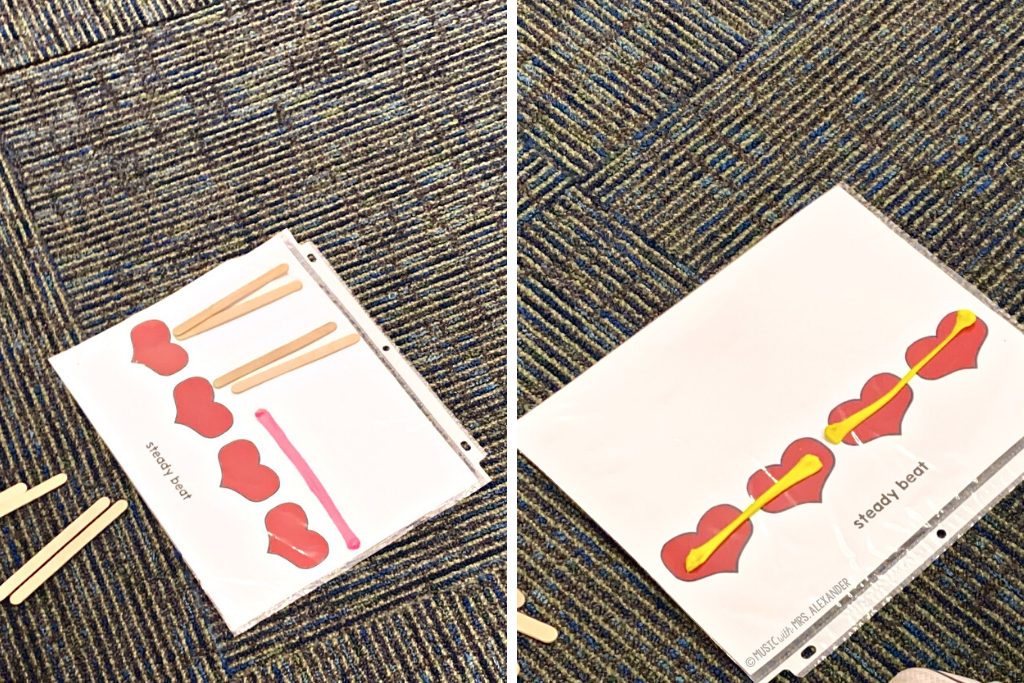
Slime? Yes, slime. An unlikely choice for music manipulatives, I know. I saw this idea on Pinterest a few years ago, and I finally decided to use it in my classroom. When we learn about half notes, we use the slime to show how it stretches across two beats. Check out this post for a video of slime in action!
I hope this post has given you some ideas for making music manipulatives for your students. Looking for ideas on how to sequence your curriculum? Grab my free K-2 scope and sequence here! Looking for no-fuss, ready-to-teach lesson plans that are already done for you? Got you covered! Check out the kindergarten, first, and second grade units in my Teachers Pay Teachers store!
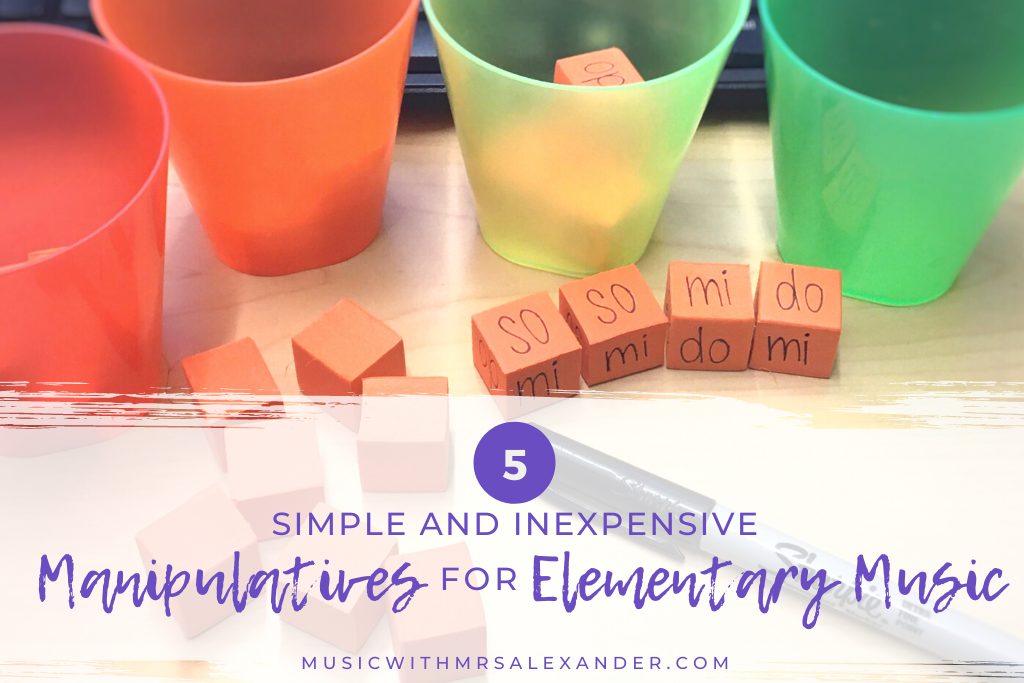
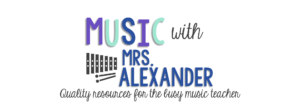





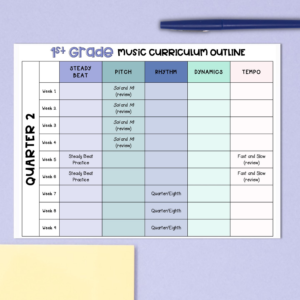
2 Responses